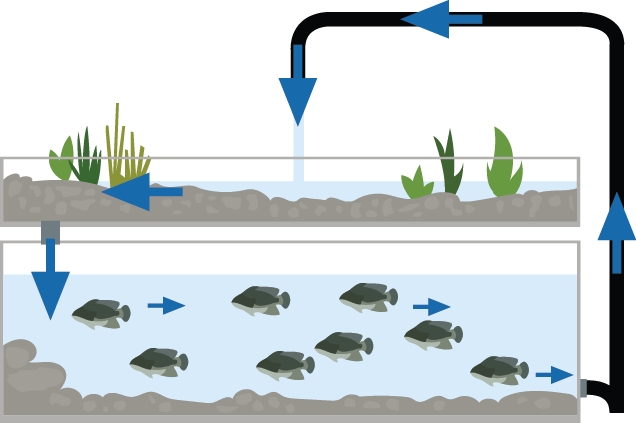H2Grow aims to feed hungry in CU
Apr 19, 2017
Last updated on July 25, 2017 at 09:36 a.m.
A University group has been working on a project called H2Grow that strives to feed the hungry in the Champaign-Urbana area.
The project is part of Enactus, a registered student organization at the University. Enactus began about 10 years ago and develops social entrepreneurship in business.
Natalie Brady, freshman in Business, joined Enactus this year and is responsible for the social media side of the project.
“We have a variety of different projects that are based upon a business model, but more about helping the world and helping a specific population,” Brady said.
Get The Daily Illini in your inbox!
Enactus has about eight projects that focus on helping the community, from trying to stop domestic violence to teaching financial literacy.
H2Grow started out last year as an idea to feed impoverished people in the community with cheaply grown vegetables.
A small group of students started researching and planning where to put the setup, what supplies to get and how much it would cost.
With the help of a $5,000 grant from the Student Sustainability Committee, the students were able to buy supplies to build an aquaponics system and about 70 tilapia for $3,100.
They started building the system in the Turner Hall greenhouses last fall and now have a fully developed system that is growing green vegetables like lettuce, kale and arugula.
They are able to do this with aquaponics, which is the use of fish feces as fertilizer for growing plants. There is a series of grow beds over the fish and pipes that connect it to the fish tank.

Each of the grow beds is filled with small, clay Hydroton balls that keep the seeds still and able to grow.
The aquaponics system is now self-sustaining and only requires a few members of the team to come in a couple times a week to feed the fish and check the equipment.
Now, with the fish producing waste efficiently, they can grow a full bed of lettuce or kale within two or three weeks.
“It’s a really sustainable option for farming because it uses less water than traditional farming,” Brady said. “It’s closed loop so there’s no waste, fertilizer runoff or anything like that, so there’s no pollution.”
Brady also explained how this project was created to impact the Champaign-Urbana area specifically.
“In Champaign too, a lot of the soil in residential areas is contaminated, so this is a way for things to grow where the soil is not contaminated,” Brady said.
For example, if the soil in someone’s garden is contaminated, this new aquaponics system allows them to consistently replenish a new supply of fertile soil.
H2Grow is now in the phase of reaching out to places where they can sell their food. They are currently working with Bevier Cafe, a student-operated restaurant, and Prosperity Gardens, a nonprofit organization in Champaign that is dedicated to giving fresh produce to the community.
“Eventually down the road, we’d like to partner with some other community nonprofits,” Brady said.
Kyle Gilmore, sophomore in Business, is the project manager for H2Grow. He believes teaching people how to develop systems like this can lead to the opportunity to make a small income off of the produce.
“This is something a small family can put in a garage or a room in their house,” Gilmore said. “They can grow plants without having a good climate and only being restricted to planting during the spring and summer months. This is something that can go year-round.”
The team is trying to make the system less expensive and more compact so people can have an easier time implementing it.
“(The system) is probably 80 square feet. We can have about a 12-square-foot system with this smaller prototype we’re working on and do it for about $150,” Gilmore said.
Gilmore was one of the first people on the project which started three semesters ago. Now, with eight to 10 volunteers coming into the greenhouse to help weekly, he is proud of how far the project has come.
“Personally, I have come from a fairly agricultural background. A lot of my family farms, and that’s just what I kind of grew up with,” Gilmore said. “When I first heard about this, it really got me interested in the sense that I’m able to see where I’m from and how we’re able to grow food. Just to see that this is a possibility to change for a ton of people, that was my interest.”
Gilmore is thankful that he got involved with the project because he said he learned things he would never have learned in other business groups.
“This is not necessarily something that I would be involved with if not for Enactus and the project. I’m a finance major — little would I ever come across a system like this aside from this opportunity,” Gilmore said.
Overall, he and the rest of the team are proud that they’ve creatively made a solution to a problem prevalent to so many local people.
“This one solution is a little non-traditional obviously, unconventional for sure,” Gilmore said. “That process of seeing issues in the community and seeing issues elsewhere and developing solutions to those, this is just one of many.”





